Endocrine Disruption
|
Wildlife Effects
- Lifelong Effects
- Altered States
- Invertebrates
- Fish
- Amphibians
- Reptiles
- Birds
- Mammals
- References
Many synthetic chemicals are widely used, do not easily breakdown, and are moved about by wind, water, and animals. The chemicals, and sometimes their more harmful breakdown products, pollute soil, water, plants, and animals on every continent. Wildlife can and do accumulate many of the long-lasting chemicals (the PCBs, dioxins, and organochlorine pesticides) in their fat and often pass them along to offspring and predators. Exposure to other less persistent toxic chemicals, such as atrazine, alkylphenols, and tributyltin, is also widespread.
At doses found in the environment, some of these ubiquitous chemicals can affect an animal's endocrine system, especially during critical developmental stages. These endocrine disrupting chemicals (EDCs) interfere by mimicking, blocking, or altering hormones and their signaling systems. Pinpointing trouble is tricky because distinct health effects occur among different species, in different organs, and at different life stages.
Establishing cause and effect in wildlife has been difficult and even controversial. Since all wild populations are exposed to a variety of pollutants and other stresses, fingering one pollutant or class of pollutants requires extensive sleuthing. Wildlife researchers provide evidence about exposure and effects by observing, testing, and conducting laboratory experiments to answer questions, such as: Does the hormone problem occur at the same time and place as the pollutant but not in its absence? Does a particular pollutant cause similar problems when given in a controlled laboratory setting? Are hormone-related problems found in different wild populations in different places and at different times?
Lifelong Effects
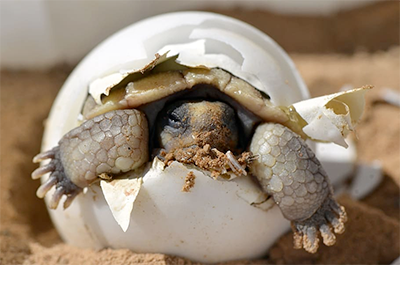 Studies of cell cultures, laboratory animals, wildlife, and accidentally exposed humans show EDCs can cause a wide range of reproductive, developmental, growth, and behavior problems. Most of these adversities are traced to estrogen, androgen, antiandrogen, and antithyroid actions. Less studied are interactions with other hormones and possible effects on immunity (infections), metabolism, (obesity), the brain (intelligence, behavior), the heart, the lungs, and multiple generations (Guillette In Press). Studies of cell cultures, laboratory animals, wildlife, and accidentally exposed humans show EDCs can cause a wide range of reproductive, developmental, growth, and behavior problems. Most of these adversities are traced to estrogen, androgen, antiandrogen, and antithyroid actions. Less studied are interactions with other hormones and possible effects on immunity (infections), metabolism, (obesity), the brain (intelligence, behavior), the heart, the lungs, and multiple generations (Guillette In Press).
CAPTION: Chemical pollutants can permanently impact the lifelong health of developing animals, like this turtle hatchling.
Some identified effects of EDCs in wildlife include:
- abnormal blood hormone levels;
- masculinization of females;
- feminization of males;
- intersex;
- deformities;
- abnormal and malformed reproductive organs;
- embryo mortality;
- skewed sex ratios;
- reduced fertility;
- altered sexual behavior;
- modified immune system;
- altered thyroid functions;
- brain and neurological problems;
- reproductive tissue cancers; and
- altered bone density and structure
Fetuses and embryos, whose growth and development are highly controlled by the endocrine system, seem especially vulnerable to exposure (Bern 1992). Mothers can pass contaminants to their offspring prenatally in eggs (fish, amphibians, reptiles, birds) or the womb (mammals) and after birth by breastfeeding newborns. Exposed adult animals may not show ill effects, but their offspring may have overt or subtle lifelong health and/or reproductive abnormalities.
Altered States
Generally, wildlife can be feminized, masculanized, or reproductively suppressed by EDCs.
Feminized means males produce more estrogen then normal. This imbalance leads to puny male secondary sex characteristics (faint coloration, small penis, or lackluster courtship behavior), intersex reproductive organs (part female ovary, part male testis), and possible low fertility. Feminization is well documented in fish and alligators living in highly contaminated water.
Females can be masculinized. That is, they develop male secondary sex characteristics, particularly penises or penis-like organs. They may also have skewed hormone levels, poorly defined or smaller female reproductive organs, and reduced fertility.
Invertebrates
Female snails should not have a penis. But, some of these marine invertebrates, especially snails and other mollusks, living in coastal areas around the world developed the male reproductive organ after being exposed to the organometal tributyltin (TBT). TBT is an ingredient in anti-fouling paint used to rid boats and ships of barnacles and other unwanted hitchhikers. Even at very low concentrations (1 part per billion), TBT causes female snails to grow a penis that blocks their egg-releasing duct. The females produce eggs that cannot be fertilized and released. In the 1980s and 1990s, populations of coastal marine snails in Europe, North America, and Asia dwindled rapidly. In response to this problem, TBT is now restricted to use on ships longer than 25 meters (75 feet). TBT concentrations in harbor sediments are lower and many of the affected populations are slowly recovering (Evans 1999).
Fish
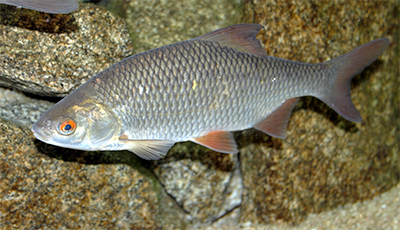 Worldwide, EDCs feminize, masculanize, and suppress reproduction in wild fish. Widespread feminization occurs in the United Kingdom (UK). Male fish with feminine characteristics are found near freshwater municipal sewage outlets in England. The fish have intersex organs that produce fewer motile sperm than normal testes, have skewed blood levels of the estrogen hormone estradiol, and have livers that produce vitellogenin, an egg-yolk protein normally found at extremely low levels in males. Not surprisingly, these intersex males had very low sperm counts and were less fertile than normal males (Jobling and Sumpter 1993; Jobling et al. 1998, 2002a, 2002b). Worldwide, EDCs feminize, masculanize, and suppress reproduction in wild fish. Widespread feminization occurs in the United Kingdom (UK). Male fish with feminine characteristics are found near freshwater municipal sewage outlets in England. The fish have intersex organs that produce fewer motile sperm than normal testes, have skewed blood levels of the estrogen hormone estradiol, and have livers that produce vitellogenin, an egg-yolk protein normally found at extremely low levels in males. Not surprisingly, these intersex males had very low sperm counts and were less fertile than normal males (Jobling and Sumpter 1993; Jobling et al. 1998, 2002a, 2002b).
CAPTION: EDCs have various effects on many fish species, including the roach (Rutilus rutilus).
CREDIT: Wikimedia.
Two groups of compounds are the most likely culprits: the alkylphenols (breakdown products of chemicals found in detergents and plastics) and natural and synthetic estrogens, including 17-beta-estradiol, estrone, and 17-alpha-ethinylestradiol (Desbrow et al. 1998; Jobling and Sumpter 1993; Routledge et al. 1998). In at least one case, adding more effluent processing to remove the suspected toxic compounds reduced the estrogen-mimicking capacity of the domestic and industrial treated sewage released into England’s Aire River, England (Sheahan et al. 2002).
Fish in UK’s estuaries and oceans also have intersex reproductive organs, make vitellogenin, and some even have feminized genitals (Kirby et al. 2004; Matthiessen et al. 2002). But, little fertility data exist, so population consequences are largely unknown.
Masculinized females occur in some rivers in the United States. Female mosquitofish living downstream from papermill wastewater outfalls in the southeast develop male genital organs and male courtship behavior (Bortone et al. 1989; Howell et al. 1980). This apparent sex change is only superficial, as masculinized females have ovaries and give birth to live babies, just like normal females of this species (Bortone and Davis 1994). How the physical and behavior alterations might affect reproduction and populations is still unclear.
What exactly masculinizes the fish is not known. Plant chemicals called sterols (cholesterol-like fats) released from cooked wood pulp are the prime suspects. Bacteria in the water and river sediments convert the sterols to male androgen hormones, which then contaminate the water and influence fish development (Jenkins et al. 2001, 2003).
Pulp and paper mill effluents can also suppress or inhibit reproductive capacity in male and female fish. Certain species of wild fish in Canada, Norway, Sweden, and the US have lower sex hormone levels, take longer to reach puberty, and have reduced fertility. The effluents’ endocrine disrupting capability remains after eliminating chlorine bleaching and improving treatment. This again suggests that compounds present in the wood itself are responsible (Munkittrick et al. 1998). Current efforts are focused on identifying the culprit and developing treatment methods to remove it (Hewitt et al. 2002).
Amphibians
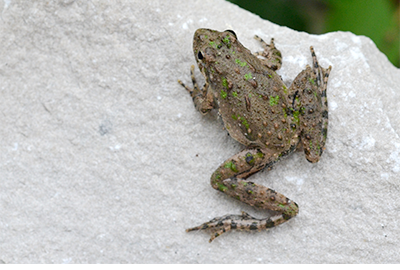 Wild frogs in the US suffer from sexual disruption. Up to 9% of cricket frog populations in Illinois are intersex. That is, the frogs have eggs in the testis or have one complete testis and one complete ovary, instead of the normal two testes or two ovaries (Reeder et al. 2005).
Ten - 90 percent of male northern leopard frogs collected in 2001 in the upper Midwest also had eggs in the testis (Hayes et al. 2003). Wild frogs in the US suffer from sexual disruption. Up to 9% of cricket frog populations in Illinois are intersex. That is, the frogs have eggs in the testis or have one complete testis and one complete ovary, instead of the normal two testes or two ovaries (Reeder et al. 2005).
Ten - 90 percent of male northern leopard frogs collected in 2001 in the upper Midwest also had eggs in the testis (Hayes et al. 2003).
Preserved museum specimens and laboratory experiments suggest the intersex conditions are not normal frog sexuality and are probably due to organic pollutants.
CAPTION: Environmental chemicals can adversely affect northern cricket frogs and other amphibians.
CREDIT:Wikimedia
A team of researchers studied hundreds of preserved museum specimens of cricket frogs collected in Illinois over the past 150 years (Reeder et al, 2005). Only 1 percent of frogs collected between 1852 and 1929—before industrial and agricultural use of organochlorine chemicals—were intersex. Between 1946 and 1959, the period of heaviest organochlorine use, 17 percent of frogs were intersex. Coincident with decreased use and banning of DDT and PCBs, the frequency of intersex frogs declined to 9 percent between 1980 and 1996. Over the entire 150 years, intersex cricket frogs were most prevalent in northeastern Illinois, the most heavily industrialized and urbanized part of the state. Since 1960, almost no cricket frogs have been collected in this region, strongly suggesting that sexual disruption led to local extinction of cricket frogs.
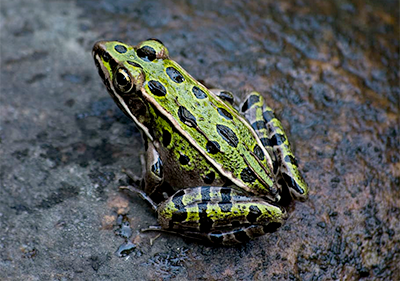 Northern leopard frogs across the United States’ upper Midwest experience varying degrees of sexual disruption. The suspected culprit may be the herbicide atrazine (Hayes et al. 2003). Collection sites with 0.2 - 6.7 parts per billion atrazine in the water had 10 - 90 percent intersex males, while the only site with 100 percent normal males had less than 0.2 parts per billion atrazine. Leopard frog tadpoles exposed to atrazine (0.1 or 25 parts per billion) in the laboratory also developed eggs in the testes (Hayes et al. 2003). Northern leopard frogs across the United States’ upper Midwest experience varying degrees of sexual disruption. The suspected culprit may be the herbicide atrazine (Hayes et al. 2003). Collection sites with 0.2 - 6.7 parts per billion atrazine in the water had 10 - 90 percent intersex males, while the only site with 100 percent normal males had less than 0.2 parts per billion atrazine. Leopard frog tadpoles exposed to atrazine (0.1 or 25 parts per billion) in the laboratory also developed eggs in the testes (Hayes et al. 2003).
CAPTION: Northern leopard frogs exposed to chemicals in the wild and in the lab form abnormal sex organs.
CREDIT: © 1979 Alan Resetar
Whether intersex cricket and leopard frogs are feminized males or masculinized females is hard to discern because the frogs’ genetic sex have not been determined. Some evidence suggests that the intersex cricket frogs are masculinized females. Where intersexes are found, the proportion of females drops, but the proportion of males remains at the expected 50 percent. The leopard frog male, female, and intersex ratio has not been reported.
Reptiles
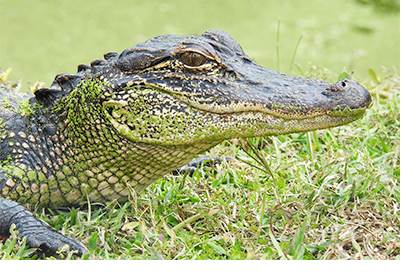 EDCs’ toxic effects are well documented in turtles and alligators. One of the most well known examples is from alligators living in Florida's Lake Apopka. The animals were exposed to the estrogenic pollutants dicofol and DDT and its metabolites, DDD, DDE, and chloro-DDT, after an extensive chemical spill in 1980. The lake’s alligator population plummeted during the next 10 years. EDCs’ toxic effects are well documented in turtles and alligators. One of the most well known examples is from alligators living in Florida's Lake Apopka. The animals were exposed to the estrogenic pollutants dicofol and DDT and its metabolites, DDD, DDE, and chloro-DDT, after an extensive chemical spill in 1980. The lake’s alligator population plummeted during the next 10 years.
CAPTION: Reproductive effects in Florida’s alligators are well documented.
Researchers investigated and found many health and hormone anomalies in the lake’s predatory reptiles. Eggs and newborn alligators had higher than normal mortality. The eggs were loaded with high concentrations of p,p’-DDE, p,p’-DDD, and other organochlorine pesticides. Teenaged females had severe ovarian abnormalities and blood estrogen levels two times higher than normal. The male juvenile alligators were feminized. They had smaller than normal penises, abnormal testes, and higher estrogen and lower testosterone levels in their blood than normal males of the same age. The researchers concluded that chemicals from the spill not only killed developing eggs outright but also altered the embryos’ hormone levels and sexual development, which severely limited reproduction (Guillette et al. 1994, 1995).
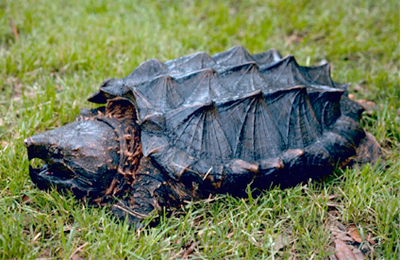 In a laboratory follow-up study, several of the same chemicals measured in Florida’s wild alligator eggs were applied to turtle eggs. The pollutants changed blood hormone levels and sexual development in the red-eared slider turtles. Some, but not all males, became females (Willingham and Crews 1999). Males dosed with chemicals before hatching had lower blood levels of testosterone than normal males. Females had lower progesterone and testosterone. Estrogen was so low in both the normal and chemically exposed young turtles that it could not be measured (Willingham et al. 2000). In a laboratory follow-up study, several of the same chemicals measured in Florida’s wild alligator eggs were applied to turtle eggs. The pollutants changed blood hormone levels and sexual development in the red-eared slider turtles. Some, but not all males, became females (Willingham and Crews 1999). Males dosed with chemicals before hatching had lower blood levels of testosterone than normal males. Females had lower progesterone and testosterone. Estrogen was so low in both the normal and chemically exposed young turtles that it could not be measured (Willingham et al. 2000).
CAPTION: Sex organ and bone problems are found in snapping turtles exposed to long-lasting toxic compounds in the environment.
CREDIT: Wikimedia.
Other turtles also show effects from exposure to EDCs. Snapping turtles living in wetlands of Ontario, Canada’s Great Lakes region are exposed to organochlorine pollutants, primarily PCBs and pesticides. Even though most of these contaminants are now banned, the residues still linger. Turtle eggs in contaminated wetlands contain 100 - 150 times more pollutants than eggs in uncontaminated marshes. Like Florida’s alligators, external sexual differences between male and female snapping turtle juveniles and adults are diminished. Unlike alligators, estrogen and testosterone levels are normal and populations at the contaminated sites are healthy, even though contaminant exposure increases the incidence of skeletal deformities (de Solla et al. 1998, 2002; Bishop et al. 1998).
The yellow-blotched map turtle is classified as threatened throughout its range of southern Mississippi. Although sexual development is not obviously affected, adult turtles carry PCBs and DDTs in their liver, fat, and muscle (Kannan et al. 2000),. Males captured from a contaminated site had lower blood levels of testosterone than normal males. A small percentage of these males had female-like levels of estrogen (Shelby and Mendonca 2001).
Birds
 Since the 1950s, fish-eating and predatory bird populations have suffered a variety of health problems due to organochlorine pollutants, including poor reproductive success, growth retardation, and goiter (an over-sized, over-worked thyroid gland). The birds are burdened with a stew of organochlorines, especially p,p’-DDE and PCBs. Since the 1950s, fish-eating and predatory bird populations have suffered a variety of health problems due to organochlorine pollutants, including poor reproductive success, growth retardation, and goiter (an over-sized, over-worked thyroid gland). The birds are burdened with a stew of organochlorines, especially p,p’-DDE and PCBs.
CAPTION: Eggshell thinning, caused by toxic chemicals, severely affected bald eagle populations.
CREDIT: U.S. Fish and Wildlife Service.
Reproductive failure in bald eagles, brown pelicans, gulls, and other birds of prey during the 1970s through the early 1990s was mainly due to eggshell thinning caused by p,p’-DDE (a breakdown chemical of the pesticide DDT). How p,p’-DDE thins eggshells has been studied and debated since the 1970s. One well-accepted explanation is that the chemical blocks the cellular signal that allows the eggshell gland to deposit calcium in the shell (Bowerman et al. 2000; Dawson 2000; Lundholm 1997).
The birds’ fates improved after the ban of DDT in the US and Europe. p,p’-DDE concentrations in the native birds have declined, eggshell thickness has improved in most species, and populations are recovering. However, DDT is still produced and used extensively in tropical regions to control malaria-carrying mosquitoes. Since these chemicals are long-lived and ubiquitous, bird life around the world is still at risk from the pollutants.
 Yet, even though there are improvements, birds of prey and fish-eating birds in the DDT-banned countries are still plagued by reproductive problems associated with p,p’-DDE and PCB body burdens. And, some species seem to be more sensitive than others. Bald eagles near the Great Lakes still have high blood levels of PCBs and p,p’-DDE and have fewer chicks successfully leaving the nest than eagles from inland populations with lower blood levels of chemicals (Bowerman et al. 2000). Yet, even though there are improvements, birds of prey and fish-eating birds in the DDT-banned countries are still plagued by reproductive problems associated with p,p’-DDE and PCB body burdens. And, some species seem to be more sensitive than others. Bald eagles near the Great Lakes still have high blood levels of PCBs and p,p’-DDE and have fewer chicks successfully leaving the nest than eagles from inland populations with lower blood levels of chemicals (Bowerman et al. 2000).
CAPTION: High levels of persistent compounds are commonly found in gulls and other fish-eating birds.
CREDIT: PickPik.
Higher PCB concentrations in the blood of nesting glaucous gulls are linked to worse parental care. The male and female gulls are absent from the nest more often and for longer periods (Bustnes et al. 2001). In contrast, egg concentrations of PCBs eight times higher than those found in the most contaminated gulls had no effect on hatching or survival of young dippers (a small songbird) (Ormerod et al. 2000).
Although organochlorines clearly cause serious reproductive problems in wild birds, there is little evidence that sexual development is permanently affected. In the laboratory, p,p’-DDE and other DDT metabolites stimulated egg and sperm germ cells to migrate into a more female-like position in the testes of male Western gull embryos. At hatching, some male embryos even had oviducts (the tubes connecting an ovary to the genitals) (Fry and Toone 1981). No adult gulls with feminized testes or oviducts were collected in wild populations.
In another example, researchers studied a common tern breeding colony in Massachusetts’ Buzzard’s Bay to test whether early signs of feminization might indicate continued abnormal sexual development. Many of these birds feed near New Bedford Harbor at a site heavily contaminated with PCBs. Their eggs have very high PCB concentrations, similar to those found in bald eagles incapable of reproducing. Approximately half of the just-hatched male tern chicks had germ cells arranged in a female-like pattern, but no oviducts. No 21-day-old male chicks had female-like tissue in the testis nor did any adult males have ovarian tissue in the testis. The researchers concluded that gonad feminization was temporary and unlikely to compromise reproduction (Hart et al. 2003).
Mammals
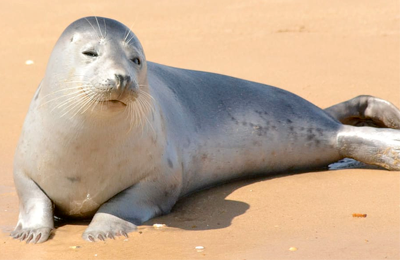 Marine mammals, including seals, sea lions, porpoises, dolphins, and some whales, living in the world’s oceans have high concentrations of organochlorine pollutants such as PCBs and pesticides stored in their blubber (Fossi et al. 2003; Le Boeuf et al. 2002; Tanabe 2002). Except for plankton-feeding whales, marine mammals are top predators who accumulate the pollutants from their contaminated prey. Because the contaminants stay associated with fat they are passed along to nursing young in the mother’s milk. Marine mammals, including seals, sea lions, porpoises, dolphins, and some whales, living in the world’s oceans have high concentrations of organochlorine pollutants such as PCBs and pesticides stored in their blubber (Fossi et al. 2003; Le Boeuf et al. 2002; Tanabe 2002). Except for plankton-feeding whales, marine mammals are top predators who accumulate the pollutants from their contaminated prey. Because the contaminants stay associated with fat they are passed along to nursing young in the mother’s milk.
CAPTION: Skewed hormone levels and reproductive problems plague harbor seals and other marine mammals.
Body burdens of PCBs and polybrominated diphenyl ethers (PBDEs, a type of flame-retardant) are associated with altered reproductive and thyroid hormone levels. Seals fed organochlorine-contaminated fish from the Wadden Sea (Netherlands) during the early 1980s ovulated and had normal blood levels of estrogen and progesterone. However, only 30 percent became pregnant compared to 83 percent of seals fed uncontaminated fish (Reijnders 1986). Seals fed an experimental diet of PCB-contaminated fish had lower than normal levels of thyroid hormones in their blood (Brouwer et al. 1989). Wild grey seals off the Scottish coast have PBDEs in their blubber and unlike the PCB case, seals with more PBDEs have higher thyroid hormone levels (Hall et al. 2003).
 Polar bears are ultra-top predators. They eat the seals and killer whales that have accumulated large body burdens of PCBs and organochlorine pesticides. As a consequence, polar bears can have very high concentrations of pollutants in their blood and fat. In a heavily contaminated population of polar bears in Svalbard, Norway, a suite of hormonal changes is linked with the total blood levels of PCBs and organochlorine pesticides. Polar bears are ultra-top predators. They eat the seals and killer whales that have accumulated large body burdens of PCBs and organochlorine pesticides. As a consequence, polar bears can have very high concentrations of pollutants in their blood and fat. In a heavily contaminated population of polar bears in Svalbard, Norway, a suite of hormonal changes is linked with the total blood levels of PCBs and organochlorine pesticides.
CAPTION: Polar bears and other top predators accumulate pollutants from their prey. CREDIT: New Zealand Herald
Female bears with higher contaminant burdens have higher blood levels of progesterone, but similar estrogen levels when compared to females with low contaminant burdens (Haave et al. 2003). More heavily contaminated male bears have lower blood testosterone levels (Oskam et al. 2003). Regardless of age and sex, bears with higher contaminant burdens have lower blood levels of cortisol (stress hormone) and thyroid hormones (Oskam et al. 2004; Skaare et al. 2001).
The implications of these hormonal disruptions are not fully understood, but the Svalbard polar bears have a low reproductive rate compared to other populations (Wiig 1998). Whether low fertility is due to contaminant-related hormone problems or to differing population age structure and nutritional status is a source of continuing research and debate (Haave et al. 2003).
Laboratory experiments using rats help tease apart how PCBs meddle with thyroid hormones. The pollutants do not deceive the thyroid receptor. Instead, they derail delivery of thyroid hormone to the cells by attaching to thyroid transport proteins in the blood, pushing off thyroid hormone. Liver enzymes dispose of the free-floating thyroid hormones. In a double-whammy effect, PCBs also rev up activity of these disposal enzymes. The net effect is abnormally low levels of thyroid hormone in blood.
References
- Bern H. 1992. The fragile fetus. In: Chemically-induced Alterations in Sexual and Functional Development: The Wildlife/Human Connection, pp. 9-15. Eds T. Colborn and C. Clement. Vol 21. Princeton. NJ:Princeton Scientific Publishing Co.
- Bishop C, Ng P, Pettit K, Kennedy S, Stegeman J, Norstrom R, and Brooks R. 1998. Environmental contamination and developmental abnormalities in eggs and hatchlings of the common snapping turtle (Chelydra serpentina serpentina) from the Great Lakes-St Lawrence River basin (1989 - 1991). Environmental Pollution 101:143-156.
- Bortone S and Davis W. 1994. Fish intersexuality as indicator of environmental stress. Bioscience 44:165-172.
- Bortone SA, Davis WP, and Bundrick CM. Morphological and behavioral characters in mosquitofish as potential bioindication of exposure to kraft mill effluent. Bulletin of Environmental Contaminants and Toxicology 43:370-377.
- Bowerman W, Best D, Grubb T, Sikarskie J, and Giesy J, 2000. Assessment of environmental endocrine disruptors in bald eagles in the Great Lakes. Chemosphere 41:1569-1574.
- Brouwer A, Reijnders P, and Koeman J. 1989. Polychlorinated biphenyl PCB-contaminated fish induces vitamin A and thyroid hormone deficiency in the common seal Phoca vitulina. Aquatic Toxicology 15:99-105.
- Bustnes J, Bakken V, Erikstad K, Mehlum F, and Skaare J.2001. Patterns of incubation and nest-site attentiveness in relation to organochlorine (PCB) contamination in glaucous gulls. J Applied Ecology 38:791-801.
- Dawson A. 2000. Mechanisms of endocrine disruption with particular reference to avian wildlife: a review. Ecotoxicology 9:59-69.
- Desbrow C, Routledge J, Brighty GC, Sumpter JP, and Waldock M. 1998. Identification of estrogenic chemicals in STW effluent. 1. Chemical fractionation and in vitro biological screening. Environmental Science and Technology 32:1549-1558.
- de Solla S, Bishop C, Van Der Kraak G, and Brooks R. 1998. Impact of organochlorine contamination on levels of sex hormones and external morphology of common snapping turtles (Chelydra serpentina serpentina). Environmental Health Perspectives 106:253-260.
- de Solla S, Bishop C, and Brooks R. 2002. Sexually dimorphic morphology of hatchling snapping turtle (Chelydra serpentina) from contaminated and reference sites in the Great Lakes and St. Lawrence River basin, North America. Environmental Toxicology and Chemistry 21:922-929.
- Evans S. 1999. Tributyltin pollution: The catastrophe that never happened. Marine Pollution Bulletin 38:629-636.
- Fossi M, Marsili L, Neri G, Natoli A, EP, and Panigada S. 2003. The use of a non-lethal tool for evaluating toxicological hazard of organochlorine contaminants in Mediterranean cetaceans: new data 10 years after the first paper published in MPB. Marine Pollution Bulletin 46:972-982.
- Fry DM and Toone CK. 1981. DDT-induced feminization of gull embryos. Science 213:922 - 924.
- Guillette LJ, Jr., Gross TS, Masson GR, Matter JM, Percival HF, and Woodward AR, 1994. Developmental abnormalities of the gonad and abnormal sex hormone concentrations in juvenile alligators from contaminated and control lakes in Florida. Environmental Health Perspectives 102, 680-688.
- Guillette LJ, Jr. 1995. Endocrine disrupting environmental contaminants and developmental abnormalities in embryos. Human Ecological Risk Assess 1:25-36.
- Guillette LJ, Jr. In Press (2006). Endocrine Disrupting Contaminants: Beyond the Dogma. Environmental Health Perspectives.
- Haave M, Ropstad E, Derocher A, Lie E, Dahl E, Wiig O, Skaare J, and Jenssen B. 2003. Polychlorinated biphenyls and reproductive hormones in female polar bears at Svalbard. Environmental Health Perspectives 111:431-436.
- Hall A, Kalantzi O, and Thomas G. 2003. Polybrominated diphenyl ethers (PBDEs) in grey seals during their first year of life: Are they thyroid hormone endocrine disrupters? Environmental Pollution 126:29-37.
- Hart C, Nisbet I, Kennedy S, and Hahn M. 2003. Gonadal feminization and halogenated environmental contaminants in common terns (Sterna hirundo): Evidence that ovotestes in male embryos do not persist to the prefledgling stage. Ecotoxicology 12:125-140.
- Hayes T, Hason K, Tsui M, Hoang A, Haeffele C, and Vonk A. 2003. Atrazine-induced hermaphroditism at 0.1 ppb in American leopard frogs (Rana pipiens): Laboratory and field evidence. Environmental Health Perspectives 111:568-575.
- Hewitt M, Smyth S, Dube M, Gilman C, and MacLatchy D. 2002. Isolation of compounds from bleached kraft mill recovery condensates associated with reduced levels of testosterone in mummichog (Fundulus heteroclitus). Environmental Toxicology and Chemistry 21:1359-1367.
- Howell WM, Black DA, and Bortone SA. 1980. Abnormal expression of secondary sex characters in a population of mosquitofish, Gambusia affinis holbrooki: Evidence for environmentally-induced masculinization. Copeia 4:676-681.
- Jenkins R, Angus R, McNatt H, Howell W, Kemppainen J, Kirk M, and Wilson E. 2001. Identification of androstenedione in a river containing paper mill effluent. Environmental Toxicology and Chemistry 20:1325-1331.
- Jenkins R, Wilson E, Angus R, Howell W, and Kirk M. 2003. Androstenedione and progesterone in the sediment of a river receiving paper mill effluent. Toxicological Sciences 73:53-59.
- Jobling S and Sumpter JP. 1993. Detergent components in sewage effluent are weakly oestrogenic to fish: An in vitro study using rainbow trout (Oncorhynchus mykiss) hepatocytes. Aquatic Toxicology 27:361-372.
- Jobling S, Nolan M, Tyler CR, Brighty G, and Sumpter JP. 1998. Widespread sexual disruption in wild fish. Environmental Science and Technology 32:2498-2506.
- Jobling S, Beresford N, Nolan M, Rodgers-Gray T, Brighty G, Sumpter J, and Tyler C. 2002a. Altered sexual maturation and gamete production in wild roach (Rutilus rutilus) living in rivers that receive treated sewage effluents. Biology of Reproduction 66:272-281.
- Jobling S, Coey S, Whitmore J, Kime D, VanLook K, McAllister B, Beresford N, Henshaw A, Brighty G, Tyler C, and Sumpter J. 2002b. Wild intersex roach (Rutilus rutilus) have reduced fertility. Biology of Reproduction 67:515-524.
- Kannan K, Ueda M, Shelby J, Mendonca M, Kawano M, Matsuda M, Wakimoto T, and Giesy J. 2000. Polychlorinated dibenzo-p-dioxins (PCDDs), dibenzofurans (PCDFs), biphenyl (PCBs), and organochlorine pesticides in yellow-blotched map turtle from the Pascagoula River bain, Mississippi, USA. Archives of Environmental Contamination and Toxicology 38:362-370.
- Kirby M, Allen Y, Dyer R, Feist S, Katsiadaki I, Matthiessen P, Scott A, Smith A, Stntiford G, Thain J, Thomas K, Tolhurst L, and Waldock M. 2004. Surveys of plasma vitellogenin and intersex in male flounder (Platichthys flesus) as measures of endocrine disruption by estrogenic contamination in United Kingdom estuaries: Temporal trends, 1996 - 2001. Environmental Toxicology and Chemistry 23:748-758.
- Le Boeuf B, Giesy J, Kannan K, Kajiwara N, Tanabe S, and Debier C. 2002. Organochloride pesticides in California sea lions revisited. BMC Ecology 2:11.
- Lundholm C, 1997. DDE-induced eggshell thinning in birds: Effects of p,p'-DDE on the calcium and prostaglandin metabolism of the eggshell gland. Comp Biochem Physiol Pharmacol Toxicol Endocrinol 118:113-128.
- Matthiessen P, Allen Y, Bamber S, Craft J, Hurst M, Hutchinson T, Feist S, Katsiadaki I, Kirby M, Robinson C, Scott S, Thain J, and Thomas K. 2002. The impact of oestrogenic and androgenic contamination on marine organisms in the United Kingdom: Summary of the EDMAR program. Marine Environmental Research 54:645-649.
- Munkittrick K, McMaster M, McCarthy L, Servos M, and Van Der Kraak GJ. 1998. An overview of recent studies on the potential of pulp-mill effluents to alter reproductive parameters in fish. Journal of Toxicology and Environmental Health Part B 1:347-371.
- Ormerod S, Tyler S, and Juttner I. 2000. Effects of point-source PCB contamination on breeding performance and post-fledgling survival in the dipper Cinclus cinclus. Environmental Pollution 110:505-513.
- Oskam I, Ropstad E, Dahl E, Lie E, Derocher A, Wiig O, Larsen S, Wiger R, and Skaare J. 2003. Organochlorines affect the major androgenic hormone, testosterone in male polar bears (Ursus maritimus) at Svalbard. Journal of Toxicology and Environmental Health Part A 66:2119-2139.
- Oskam I, Ropstad E, Lie E, Derocher A, Wiig O, Dahl E, Larsen S, and Skaare J. 2004. Organochlorines affect the steroid hormone cortisol in the free-ranging polar bears (Ursus maritimus) in Svalbard, Norway. Journal of Toxicology and Environmental Health Part A 67:959-977.
- Reeder A, Ruiz M, Pessier A, Brown L, Levengood J, Phillips C, Wheeler M, Warner R, and Beasley V. 2005. Intersexuality and the cricket frog decline: Historic and geographic trends. Environmental Health Perspectives 113:261-265.
- Reijnders P. 1986. Reproductive failure in common seals feeding on fish from polluted coastal waters. Nature 324:456-457, erratum p. 418.
- Routledge EJ, Sheahan D, Desbrow C, Brightly GC, Waldock M, and Sumpter JP. 1998. Identification of estrogenic chemicals in STW effluent. 2. In vivo responses in trout and roach. Environmental Science and Technology 32:1559-1565.
- Sheahan D, Brighty G, Daniel M, Jobling S, Harries J, Hurst M, Kennedy J, Kirby S, Morris S, Routledge E, Sumpter J, and Waldock M, 2002. Reduction in the estrogenic activity of a treated sewage effluent discharge to an English river as a result of a decrease in the concentration of industrially derived surfactants. Environmental Toxicology and Chemistry 21:515-519.
- Shelby J and Mendonca M. 2001. Comparison of reproductive parameters in male yellow-blotched map turtles (Graptemys flavimaculata) from a historically contaminated and a reference site. Comparative Biochemistry and Physiology. C. Toxicology and Pharmacology 129:233-242.
- Skaare J, Bernhoft A, Wiig O, Norum K, Haug E, Eide D, and Derocher A. 2001. Relationships between plasma levels of organochlorines, retinol and thyroid hormones from polar bears (Ursus maritimus) at Svalbard. Journal of Toxicology and Environmental Health Part A 62:227-241.
- Tanabe S. 2002. Contamination and toxic effects of persistent endocrine disrupters in marine mammals and birds. Marine Pollution Bulletin 45:69-77.
- Wiig O. 1998. Survival and reproductive rates for polar bears at Svalbard. Ursus 10:25-32.
- Willingham E and Crews D. 1999. Sex reversal effects of environmentally relevant pesticide concentrations on the red-eared slider turtle, a species with temperature-dependent sex determination. General Comparative Endocrinology 113:429-435.
- Willingham E, Turk Rhen T, Jon T. Sakata JT, and Crews D. 2000. Embryonic Treatment with Xenobiotics Disrupts Steroid Hormone Profiles in Hatchling Red-Eared Slider Turtles (Trachemys scripta elegans). Environmental Health Perspectives 108:329-332.
|
 Studies of cell cultures, laboratory animals, wildlife, and accidentally exposed humans show EDCs can cause a wide range of reproductive, developmental, growth, and behavior problems. Most of these adversities are traced to estrogen, androgen, antiandrogen, and antithyroid actions. Less studied are interactions with other hormones and possible effects on immunity (infections), metabolism, (obesity), the brain (intelligence, behavior), the heart, the lungs, and multiple generations (Guillette In Press).
Studies of cell cultures, laboratory animals, wildlife, and accidentally exposed humans show EDCs can cause a wide range of reproductive, developmental, growth, and behavior problems. Most of these adversities are traced to estrogen, androgen, antiandrogen, and antithyroid actions. Less studied are interactions with other hormones and possible effects on immunity (infections), metabolism, (obesity), the brain (intelligence, behavior), the heart, the lungs, and multiple generations (Guillette In Press). Worldwide, EDCs feminize, masculanize, and suppress reproduction in wild fish. Widespread feminization occurs in the United Kingdom (UK). Male fish with feminine characteristics are found near freshwater municipal sewage outlets in England. The fish have intersex organs that produce fewer motile sperm than normal testes, have skewed blood levels of the estrogen hormone estradiol, and have livers that produce vitellogenin, an egg-yolk protein normally found at extremely low levels in males. Not surprisingly, these intersex males had very low sperm counts and were less fertile than normal males (Jobling and Sumpter 1993; Jobling et al. 1998, 2002a, 2002b).
Worldwide, EDCs feminize, masculanize, and suppress reproduction in wild fish. Widespread feminization occurs in the United Kingdom (UK). Male fish with feminine characteristics are found near freshwater municipal sewage outlets in England. The fish have intersex organs that produce fewer motile sperm than normal testes, have skewed blood levels of the estrogen hormone estradiol, and have livers that produce vitellogenin, an egg-yolk protein normally found at extremely low levels in males. Not surprisingly, these intersex males had very low sperm counts and were less fertile than normal males (Jobling and Sumpter 1993; Jobling et al. 1998, 2002a, 2002b). Wild frogs in the US suffer from sexual disruption. Up to 9% of cricket frog populations in Illinois are intersex. That is, the frogs have eggs in the testis or have one complete testis and one complete ovary, instead of the normal two testes or two ovaries (Reeder et al. 2005).
Ten - 90 percent of male northern leopard frogs collected in 2001 in the upper Midwest also had eggs in the testis (Hayes et al. 2003).
Wild frogs in the US suffer from sexual disruption. Up to 9% of cricket frog populations in Illinois are intersex. That is, the frogs have eggs in the testis or have one complete testis and one complete ovary, instead of the normal two testes or two ovaries (Reeder et al. 2005).
Ten - 90 percent of male northern leopard frogs collected in 2001 in the upper Midwest also had eggs in the testis (Hayes et al. 2003).  Northern leopard frogs across the United States’ upper Midwest experience varying degrees of sexual disruption. The suspected culprit may be the herbicide atrazine (Hayes et al. 2003). Collection sites with 0.2 - 6.7 parts per billion atrazine in the water had 10 - 90 percent intersex males, while the only site with 100 percent normal males had less than 0.2 parts per billion atrazine. Leopard frog tadpoles exposed to atrazine (0.1 or 25 parts per billion) in the laboratory also developed eggs in the testes (Hayes et al. 2003).
Northern leopard frogs across the United States’ upper Midwest experience varying degrees of sexual disruption. The suspected culprit may be the herbicide atrazine (Hayes et al. 2003). Collection sites with 0.2 - 6.7 parts per billion atrazine in the water had 10 - 90 percent intersex males, while the only site with 100 percent normal males had less than 0.2 parts per billion atrazine. Leopard frog tadpoles exposed to atrazine (0.1 or 25 parts per billion) in the laboratory also developed eggs in the testes (Hayes et al. 2003).  EDCs’ toxic effects are well documented in turtles and alligators. One of the most well known examples is from alligators living in Florida's Lake Apopka. The animals were exposed to the estrogenic pollutants dicofol and DDT and its metabolites, DDD, DDE, and chloro-DDT, after an extensive chemical spill in 1980. The lake’s alligator population plummeted during the next 10 years.
EDCs’ toxic effects are well documented in turtles and alligators. One of the most well known examples is from alligators living in Florida's Lake Apopka. The animals were exposed to the estrogenic pollutants dicofol and DDT and its metabolites, DDD, DDE, and chloro-DDT, after an extensive chemical spill in 1980. The lake’s alligator population plummeted during the next 10 years. In a laboratory follow-up study, several of the same chemicals measured in Florida’s wild alligator eggs were applied to turtle eggs. The pollutants changed blood hormone levels and sexual development in the red-eared slider turtles. Some, but not all males, became females (Willingham and Crews 1999). Males dosed with chemicals before hatching had lower blood levels of testosterone than normal males. Females had lower progesterone and testosterone. Estrogen was so low in both the normal and chemically exposed young turtles that it could not be measured (Willingham et al. 2000).
In a laboratory follow-up study, several of the same chemicals measured in Florida’s wild alligator eggs were applied to turtle eggs. The pollutants changed blood hormone levels and sexual development in the red-eared slider turtles. Some, but not all males, became females (Willingham and Crews 1999). Males dosed with chemicals before hatching had lower blood levels of testosterone than normal males. Females had lower progesterone and testosterone. Estrogen was so low in both the normal and chemically exposed young turtles that it could not be measured (Willingham et al. 2000).  Since the 1950s, fish-eating and predatory bird populations have suffered a variety of health problems due to organochlorine pollutants, including poor reproductive success, growth retardation, and goiter (an over-sized, over-worked thyroid gland). The birds are burdened with a stew of organochlorines, especially p,p’-DDE and PCBs.
Since the 1950s, fish-eating and predatory bird populations have suffered a variety of health problems due to organochlorine pollutants, including poor reproductive success, growth retardation, and goiter (an over-sized, over-worked thyroid gland). The birds are burdened with a stew of organochlorines, especially p,p’-DDE and PCBs. Yet, even though there are improvements, birds of prey and fish-eating birds in the DDT-banned countries are still plagued by reproductive problems associated with p,p’-DDE and PCB body burdens. And, some species seem to be more sensitive than others. Bald eagles near the Great Lakes still have high blood levels of PCBs and p,p’-DDE and have fewer chicks successfully leaving the nest than eagles from inland populations with lower blood levels of chemicals (Bowerman et al. 2000).
Yet, even though there are improvements, birds of prey and fish-eating birds in the DDT-banned countries are still plagued by reproductive problems associated with p,p’-DDE and PCB body burdens. And, some species seem to be more sensitive than others. Bald eagles near the Great Lakes still have high blood levels of PCBs and p,p’-DDE and have fewer chicks successfully leaving the nest than eagles from inland populations with lower blood levels of chemicals (Bowerman et al. 2000).  Marine mammals, including seals, sea lions, porpoises, dolphins, and some whales, living in the world’s oceans have high concentrations of organochlorine pollutants such as PCBs and pesticides stored in their blubber (Fossi et al. 2003; Le Boeuf et al. 2002; Tanabe 2002). Except for plankton-feeding whales, marine mammals are top predators who accumulate the pollutants from their contaminated prey. Because the contaminants stay associated with fat they are passed along to nursing young in the mother’s milk.
Marine mammals, including seals, sea lions, porpoises, dolphins, and some whales, living in the world’s oceans have high concentrations of organochlorine pollutants such as PCBs and pesticides stored in their blubber (Fossi et al. 2003; Le Boeuf et al. 2002; Tanabe 2002). Except for plankton-feeding whales, marine mammals are top predators who accumulate the pollutants from their contaminated prey. Because the contaminants stay associated with fat they are passed along to nursing young in the mother’s milk.  Polar bears are ultra-top predators. They eat the seals and killer whales that have accumulated large body burdens of PCBs and organochlorine pesticides. As a consequence, polar bears can have very high concentrations of pollutants in their blood and fat. In a heavily contaminated population of polar bears in Svalbard, Norway, a suite of hormonal changes is linked with the total blood levels of PCBs and organochlorine pesticides.
Polar bears are ultra-top predators. They eat the seals and killer whales that have accumulated large body burdens of PCBs and organochlorine pesticides. As a consequence, polar bears can have very high concentrations of pollutants in their blood and fat. In a heavily contaminated population of polar bears in Svalbard, Norway, a suite of hormonal changes is linked with the total blood levels of PCBs and organochlorine pesticides.